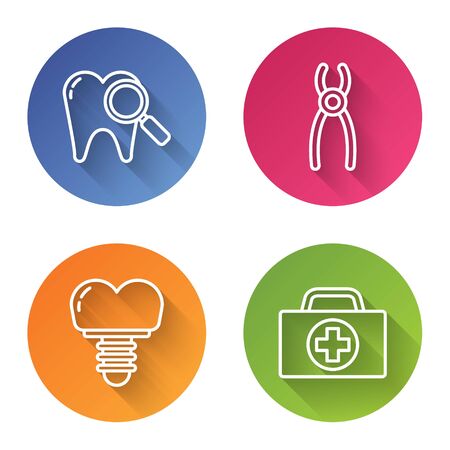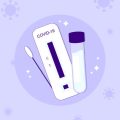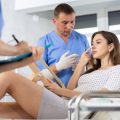Introduction to Acne and Its Impact
Acne is one of the most common skin concerns in the United States, affecting people of all ages, though it’s most often associated with teenagers. If you or someone you know has struggled with acne, you’re definitely not alone. In fact, according to the American Academy of Dermatology, up to 50 million Americans experience acne every year.
How Common Is Acne in the U.S.?
| Age Group | Estimated Percentage Affected |
|---|---|
| Teens (12-24) | 85% |
| Adults (25-44) | Nearly 15% |
| Adults (45+) | Around 5% |
As you can see, while acne is most common during teenage years, it can persist or even begin in adulthood. This widespread nature makes it much more than just a “teenage problem.”
The Emotional and Social Effects of Acne
Acne doesn’t only affect how our skin looks—it can have a real impact on self-confidence and daily life. Many people with acne report feeling embarrassed or self-conscious about their appearance. This can lead to avoiding social activities, struggling with anxiety or depression, and even experiencing bullying or teasing—especially for teens navigating high school or college.
| Emotional/Social Impact | Possible Effects |
|---|---|
| Self-Esteem | Lower confidence, body image concerns |
| Mental Health | Anxiety, depression, stress |
| Social Life | Avoidance of events, isolation, peer pressure |
| School/Work Performance | Lack of focus, missed opportunities due to self-doubt |
Why Effective Treatments Matter
Given how common and emotionally challenging acne can be, finding effective treatments isn’t just about clearer skin—it’s also about helping people feel better about themselves and live more confidently. Over the years, acne treatment options have evolved significantly. Understanding this journey—from old-school remedies to today’s modern solutions—can help anyone make informed choices about managing acne and supporting overall well-being.
2. Timeless Remedies: What Our Grandparents Used
When we think about acne treatments today, high-tech serums and dermatologist-approved products often come to mind. But long before modern science stepped in, our grandparents—and even their parents—relied on home remedies passed down through generations. Let’s take a closer look at some of these early solutions, what made them popular, and which ones stood the test of time.
Classic Home Remedies for Acne
Back in the day, people had to get creative with whatever they had in their kitchens or gardens. Many turned to natural ingredients, hoping to calm breakouts without a trip to the doctor. Here are a few of the most common old-school remedies:
| Remedy | Main Ingredient(s) | How It Was Used | Common Beliefs |
|---|---|---|---|
| Baking Soda Paste | Baking soda & water | Applied as a paste directly on pimples | Thought to dry out acne and exfoliate skin |
| Toothpaste | Mint toothpaste (non-gel) | Dabbed on blemishes overnight | Believed to shrink pimples by drying them out |
| Lemon Juice | Lemon juice | Spot treatment for acne-prone areas | Lemon’s acidity was thought to kill bacteria and fade scars |
| Apple Cider Vinegar | Apple cider vinegar diluted with water | Used as a toner or spot treatment | Said to balance skin pH and fight bacteria |
| Honey Masks | Raw honey or mixed with cinnamon | Smeared over the face as a mask | Praised for its antibacterial and soothing properties |
| Cucumber Slices | Cucumber slices or juice | Placed on skin or blended into masks | Used for cooling effect and believed to reduce inflammation |
| Aloe Vera Gel | Aloe vera leaf gel (fresh or bottled) | Smeared on irritated or inflamed areas | Known for calming redness and speeding up healing |
| Epsom Salt Baths | Epsom salt dissolved in warm water bath | Bathing affected areas regularly | Said to detoxify skin and soothe breakouts, especially on the body |
The Wisdom—And Misconceptions—of Folk Remedies
Many of these traditional treatments were based on folk wisdom rather than scientific evidence. Some ingredients like honey and aloe vera do have proven soothing benefits, but others—like lemon juice or undiluted apple cider vinegar—can actually irritate the skin if used too much. Toothpaste, although still sometimes recommended online, can lead to dryness and even more irritation.
The Role of Home Remedies in American Culture
The use of homemade treatments has always been part of American culture. Whether it was a grandmother’s advice or something seen in an old magazine, these methods became family traditions. While they offered comfort and sometimes results, they also highlight how much our understanding of skincare has changed over the years.
A Mix of Help and Hope
The main takeaway from looking back at these remedies is that while some natural ingredients can support healthy skin, not every old trick stands up to modern science. Still, these timeless approaches remind us that taking care of our skin has always been about hope, resourcefulness, and finding what works best for each person.

3. Breakthroughs in Dermatology: The Rise of Prescription Medications
As our understanding of acne grew, dermatology saw some major breakthroughs that truly changed how Americans managed this common skin condition. With the arrival of prescription medications, acne care moved beyond home remedies and over-the-counter treatments. Let’s take a closer look at the key medical advances that shaped modern acne therapy in the United States.
The Arrival of Antibiotics
In the mid-20th century, doctors began using antibiotics to target the bacteria responsible for acne breakouts. Oral antibiotics like tetracycline and doxycycline helped reduce inflammation and control severe acne that wouldn’t respond to creams or cleansers alone. For many teens and adults, these prescriptions offered a real solution when nothing else seemed to work.
Common Prescription Antibiotics for Acne
| Medication Name | How It Works | Typical Use |
|---|---|---|
| Tetracycline | Kills acne-causing bacteria; reduces inflammation | Moderate to severe acne |
| Doxycycline | Fights bacteria; anti-inflammatory properties | Persistent or cystic acne |
| Minocycline | Kills bacteria; helps prevent scarring | Severe or resistant acne cases |
The Introduction of Retinoids
Retinoids were another game-changer for American dermatology. First developed as a treatment for severe acne in the 1970s, these vitamin A derivatives help unclog pores and renew skin cells. Prescription retinoids like tretinoin (Retin-A) and isotretinoin (Accutane) became household names for those battling stubborn breakouts. While retinoids can cause dryness or irritation at first, they remain one of the most effective options for both teen and adult acne.
How Retinoids Changed Acne Treatment
- Unclogs pores: Helps prevent new pimples from forming.
- Reduces oil production: Tackles excess oil—a main culprit in breakouts.
- Smooths skin texture: Improves appearance and helps fade acne scars.
The Role of Hormonal Therapies
For women experiencing hormonal acne—often around their jawline or chin—birth control pills and other hormonal therapies became an important tool. These treatments help balance hormones that trigger excess oil production, offering relief for those whose breakouts are tied to menstrual cycles or other hormonal changes.
Examples of Hormonal Treatments Used in America:
- Birth control pills: Regulate hormones linked to acne flare-ups.
- Spironolactone: Blocks androgen hormones, reducing oiliness and breakouts.
Together, these prescription solutions revolutionized how Americans approached acne care—making it possible to manage even tough cases with the help of a dermatologist. As research continues, new therapies keep emerging, but these breakthroughs set the foundation for modern skincare routines across the country.
4. The OTC Boom: Over-the-Counter Innovations
In the United States, the landscape of acne care changed dramatically with the rise of over-the-counter (OTC) treatments. Gone are the days when you needed a doctor’s prescription for every effective product—today, many Americans can find powerful acne solutions right at their local drugstore or supermarket. This shift has made acne care more accessible than ever before, opening up a world of choices for teens and adults alike.
Popular U.S. Retail Products
Walk down any pharmacy aisle, and you’ll see shelves lined with familiar brands that have become household names. These products aren’t just popular—they’re trusted by millions for everyday acne management. Here’s a look at some top OTC options commonly found in American stores:
| Brand | Main Ingredient(s) | Type | Where to Buy |
|---|---|---|---|
| Neutrogena Oil-Free Acne Wash | Salicylic Acid | Cleanser | Target, Walmart, Walgreens |
| Clean & Clear Persa-Gel 10 | Benzoyl Peroxide 10% | Spot Treatment Gel | CVS, Rite Aid, Amazon |
| CeraVe Acne Foaming Cream Cleanser | Benzoyl Peroxide 4% | Cream Cleanser | Walmart, Ulta Beauty, CVS |
| PanOxyl Acne Foaming Wash | Benzoyl Peroxide 10% | Foaming Wash | Walgreens, Target, Amazon |
| The Ordinary Niacinamide 10% + Zinc 1% | Niacinamide, Zinc PCA | Serum | Ulta Beauty, Sephora, Amazon |
| Differin Gel (Adapalene) | Adapalene (Retinoid) | Topical Gel | CVS, Walgreens, Target |
New Formulas and Ingredients on the Rise
The American OTC market is constantly evolving. Beyond classic ingredients like benzoyl peroxide and salicylic acid, new formulas are bringing innovative options to consumers. You’ll now find products featuring gentle exfoliating acids (like glycolic acid), hydrating elements (such as hyaluronic acid), and even botanicals (like tea tree oil) that appeal to those seeking milder or more natural approaches.
The Role of American Pharmacy Culture in Acne Care Accessibility
A unique aspect of acne treatment in the U.S. is how pharmacies have become more than just places to fill prescriptions—they’re wellness hubs where people can browse options, read product reviews online, and even consult pharmacists about skincare concerns. With major chains like CVS, Walgreens, and Rite Aid located in almost every neighborhood, high-quality acne care is within easy reach for most Americans. Many stores also carry a wide range of price points and offer frequent sales or loyalty programs that help make skincare affordable.
A Friendly Reminder When Choosing OTC Treatments:
- Read labels carefully: Different skin types may react differently to certain ingredients.
- Pace yourself: Start slow with new products to avoid irritation.
- If OTC doesn’t work: Don’t hesitate to ask your pharmacist for advice or see a dermatologist.
The availability and variety of OTC acne products in America means there’s something for everyone—from simple face washes to advanced serums—all just a quick trip or online order away.
5. Modern Trends: Technology and Holistic Approaches
Today’s approach to acne treatment in the U.S. is more advanced and personalized than ever before. Thanks to new technologies and a growing focus on wellness, people have a wide range of options beyond traditional creams and prescriptions. Let’s take a look at some of the most popular modern trends that are changing how Americans manage acne.
Blue Light Therapy: A High-Tech Solution
Blue light therapy has quickly become a favorite among those seeking non-invasive treatments. This technology uses specific wavelengths of blue light to target acne-causing bacteria on the skin. Many dermatology offices now offer blue light sessions, and there are even FDA-cleared devices for home use. The appeal? It’s quick, painless, and doesn’t involve harsh chemicals or antibiotics.
What Makes Blue Light Therapy Stand Out?
| Feature | Benefit |
|---|---|
| Non-invasive | No needles or surgery required |
| Chemical-free | Gentle on sensitive skin |
| Quick sessions | Treatments can take as little as 10-20 minutes |
| At-home options | Convenient for busy lifestyles |
Teledermatology: Expert Care from Home
The rise of telehealth has made it easier for Americans to consult with dermatologists without leaving their homes. Through teledermatology, patients can upload photos of their skin, describe symptoms, and get expert advice—all through secure online platforms. This trend is especially popular in rural areas where access to specialists might be limited, making professional care more accessible than ever.
Vegan and Clean Beauty Products: Conscious Skincare Choices
With greater awareness of health and sustainability, many people are choosing vegan and clean beauty products for their skincare routines. These products avoid animal-derived ingredients and harsh chemicals, focusing instead on natural and plant-based formulas. U.S. consumers appreciate brands that are transparent about their ingredient lists and eco-friendly packaging.
Popular Ingredients in Vegan & Clean Beauty Acne Products
| Ingredient | Main Benefit for Acne-Prone Skin |
|---|---|
| Aloe Vera | Soothes irritation and reduces redness |
| Tea Tree Oil | Naturally antibacterial and helps clear pores |
| Zinc PCA | Regulates oil production and calms inflammation |
| Willow Bark Extract (Natural Salicylic Acid) | Exfoliates gently to prevent clogged pores |
Wellness-Oriented Treatments: Addressing Acne from Within
A holistic approach is gaining popularity among U.S. audiences who believe that healthy skin starts from the inside out. Wellness-oriented treatments include dietary adjustments, stress management techniques like mindfulness or yoga, and supplements such as probiotics or zinc. Many dermatologists now recommend combining lifestyle changes with topical products for better results.
These modern trends reflect a shift toward personalization, convenience, and overall well-being—helping individuals in the U.S. find an acne treatment path that fits both their skin’s needs and their lifestyle.
6. Choosing the Right Solution: Personalization in Modern Acne Care
With so many acne treatments available today, it can feel overwhelming to pick the right one for your unique skin needs. Unlike the one-size-fits-all remedies of the past, modern acne care is all about personalization. American dermatologists now emphasize that what works for one person may not work for another. This shift toward individualized care helps people find solutions that really fit their lifestyle, skin type, and severity of acne.
Why Personalization Matters
No two people have exactly the same skin. Factors like age, genetics, environment, and even stress levels all play a role in how acne develops. That’s why treatments are no longer just about “drying out” pimples or using harsh products; they’re about creating a routine that matches your specific situation. Personalized care means you’re more likely to see real results without unnecessary side effects.
Common Modern Acne Treatments
| Treatment Type | Best For | How It Works | Notes |
|---|---|---|---|
| Topical Retinoids | Mild to moderate acne | Helps unclog pores and reduce inflammation | Prescription or over-the-counter options available |
| Benzoyl Peroxide | Mild acne or spot treatment | Kills bacteria on the skin’s surface | May cause dryness; use with moisturizer |
| Oral Antibiotics | Moderate to severe acne | Reduces bacteria and inflammation from within | Short-term use recommended to prevent resistance |
| Hormonal Therapy (e.g., birth control) | Hormonal acne, often in women | Balances hormone levels that trigger breakouts | Requires consultation with a healthcare provider |
| Professional Procedures (e.g., chemical peels, laser therapy) | Stubborn or scarring acne | Targets deeper layers of skin for long-lasting results | Performed by dermatologists or skincare professionals only |
Navigating Your Options in the American Health System
The U.S. health system offers a wide range of resources for acne care—from primary care physicians to board-certified dermatologists. If over-the-counter treatments aren’t working or if you have persistent or severe breakouts, don’t hesitate to reach out for professional help. Dermatologists can recommend prescription medications, advanced therapies, and even lifestyle adjustments tailored just for you.
Tips for Finding Your Best Acne Solution:
- Start Simple: Try basic skincare routines first and observe how your skin responds.
- Avoid Over-Treating: Too many products at once can irritate your skin and make acne worse.
- Consult a Professional: Schedule an appointment with a dermatologist if your acne is stubborn, painful, or causing scarring.
- Be Patient: Most treatments take several weeks to show results—stick with your plan!
- Cultural Considerations: Feel free to ask about options that fit your lifestyle and preferences; American dermatologists are used to working with diverse patients.
Your Journey Is Unique—And So Is Your Treatment Plan!
The evolution of acne care means there’s no need to settle for outdated remedies or generic advice. By working with healthcare professionals and being open to trying different approaches, you can find an effective solution that fits your needs and helps you feel confident in your own skin.
7. Looking Ahead: The Future of Acne Management
As we look toward the future, acne treatments in the U.S. are on the verge of some exciting changes. With ongoing research and new technology, the way we care for our skin is constantly evolving. Here’s a friendly look at what might be coming next for acne management.
Emerging Technologies in Acne Care
Researchers and dermatologists are exploring innovative ways to treat acne that go beyond traditional creams or oral medications. Let’s take a look at some of the promising developments:
| Innovation | How It Works | Potential Benefits |
|---|---|---|
| Light & Laser Therapy | Targets bacteria and reduces inflammation using different light wavelengths. | Non-invasive, fewer side effects, suitable for resistant acne. |
| Personalized Skincare | Uses DNA testing and AI to tailor products for individual skin types. | More effective, reduces trial-and-error with products. |
| Probiotics & Microbiome Therapies | Supports the skin’s natural bacteria balance to prevent breakouts. | Softer approach, can improve overall skin health. |
| Wearable Skin Sensors | Monitors skin condition in real time and recommends treatments via apps. | Convenient, helps track triggers and progress over time. |
The Rise of Teledermatology and Digital Care
Access to dermatological care is expanding thanks to telemedicine. Virtual appointments and AI-powered chatbots are making it easier for people across America—especially those in rural or underserved areas—to connect with specialists without leaving home. This digital revolution means faster advice, personalized recommendations, and less waiting time for everyone.
The Importance of Mental Health in Acne Treatment
The future of acne care also recognizes the emotional impact that breakouts can have. New treatment plans are starting to include mental health support like counseling or online communities, so people don’t feel alone in their journey. This holistic approach acknowledges that healthy skin is about more than just creams—it’s about confidence too.
A Glimpse Into What’s Next
The story of acne treatment isn’t finished yet. As researchers continue to learn about genetics, hormones, and lifestyle factors unique to Americans, we can expect even more targeted solutions. Whether through high-tech gadgets or natural therapies, tomorrow’s options will likely be safer, smarter, and more supportive than ever before—for teens and adults alike.


